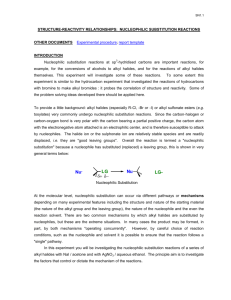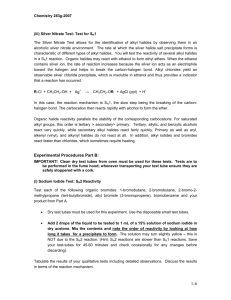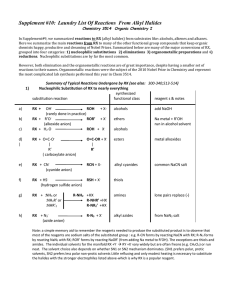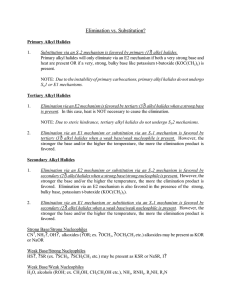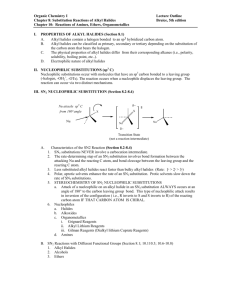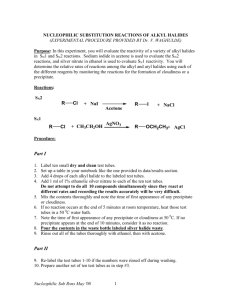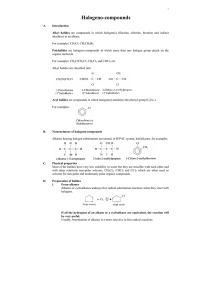EXPERIMENT #6: WEEK #7
advertisement
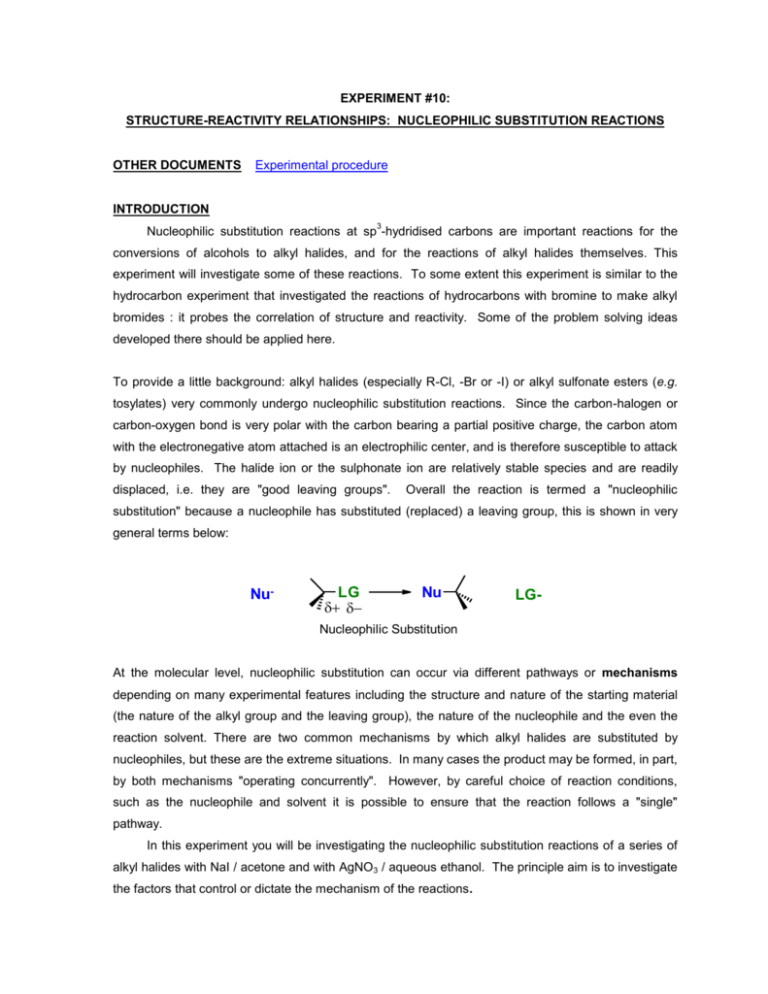
EXPERIMENT #10: STRUCTURE-REACTIVITY RELATIONSHIPS: NUCLEOPHILIC SUBSTITUTION REACTIONS OTHER DOCUMENTS Experimental procedure INTRODUCTION 3 Nucleophilic substitution reactions at sp -hydridised carbons are important reactions for the conversions of alcohols to alkyl halides, and for the reactions of alkyl halides themselves. This experiment will investigate some of these reactions. To some extent this experiment is similar to the hydrocarbon experiment that investigated the reactions of hydrocarbons with bromine to make alkyl bromides : it probes the correlation of structure and reactivity. Some of the problem solving ideas developed there should be applied here. To provide a little background: alkyl halides (especially R-Cl, -Br or -I) or alkyl sulfonate esters (e.g. tosylates) very commonly undergo nucleophilic substitution reactions. Since the carbon-halogen or carbon-oxygen bond is very polar with the carbon bearing a partial positive charge, the carbon atom with the electronegative atom attached is an electrophilic center, and is therefore susceptible to attack by nucleophiles. The halide ion or the sulphonate ion are relatively stable species and are readily displaced, i.e. they are "good leaving groups". Overall the reaction is termed a "nucleophilic substitution" because a nucleophile has substituted (replaced) a leaving group, this is shown in very general terms below: Nu- LG Nu LG- Nucleophilic Substitution At the molecular level, nucleophilic substitution can occur via different pathways or mechanisms depending on many experimental features including the structure and nature of the starting material (the nature of the alkyl group and the leaving group), the nature of the nucleophile and the even the reaction solvent. There are two common mechanisms by which alkyl halides are substituted by nucleophiles, but these are the extreme situations. In many cases the product may be formed, in part, by both mechanisms "operating concurrently". However, by careful choice of reaction conditions, such as the nucleophile and solvent it is possible to ensure that the reaction follows a "single" pathway. In this experiment you will be investigating the nucleophilic substitution reactions of a series of alkyl halides with NaI / acetone and with AgNO3 / aqueous ethanol. The principle aim is to investigate the factors that control or dictate the mechanism of the reactions. 2 Each pair of students is required to investigate the reactivity of the six different “standard” alkyl halides shown below as well as two other halides assigned by your TA. The experimental data from all the other students in your laboratory section will be collected at the end of the laboratory period and provided to you for you to analyse and discuss in your report. STANDARD ALKYL HALIDES n-butyl chloride (1-chlorobutane) n-butyl bromide (1-bromobutane) sec-butyl chloride (2-chlorobutane) sec-butyl bromide (2-bromobutane) tert-butyl chloride (2-chloro-2-methylpropane) tert-butyl bromide (2-bromo-2-methylpropane) As background preparation, draw out the structures of the standard alkyl halides shown above. You may find it useful to familiarize yourself with the sections in your text book or the course website OLC (http://www.chem.ucalgary.ca/courses/351/Carey5th/Ch08/ch8-0.html) on nucleophilic substitutions of alkyl halides. REFERENCES th F.A. Carey in "Organic Chemistry", McGraw-Hill: 8 ed., Chapter 8, pp. 323-340, Chapter 4, pp. 147159
